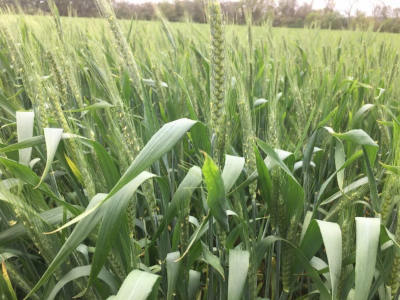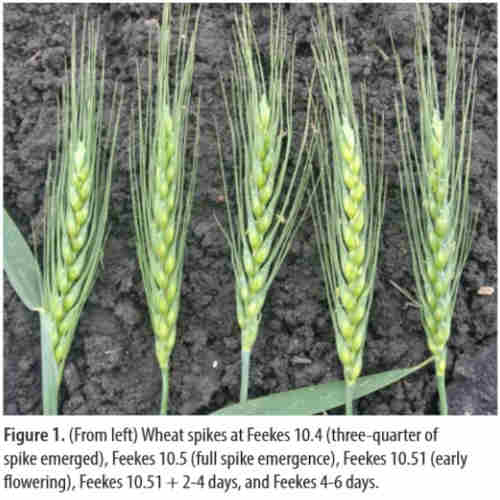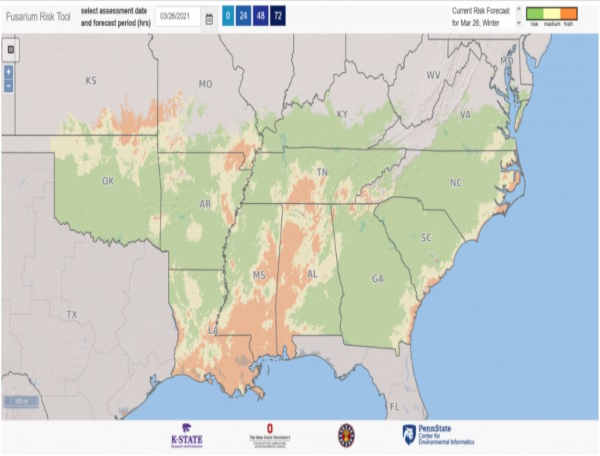By Jeremy Kichler
Fusarium Head Blight (FHB) has been a topic of discussion with growers, consultants and retailers over the last week. Growers need to monitor the stage of development of their wheat crop over the next few weeks in order to make fungicide application decisions. The stage of development of the area wheat crop ranges (March 26) from Feekes Stage 9 to 10.5.1. A great resource for determining growth stages in wheat can be found at
https://sanangelo.tamu.edu/extension/agronomy/agronomy-publications/growth-stages-of-wheat/
The fungi that causes FHB can overwinter on crop stubble such as wheat, barley, and corn, and as soilborne inoculum. FHB is introduced into a field through infected seed or wind-borne inoculum. The fungus is spread rapidly by rain splash and wind. The head, and in particular the open female flower during anthesis (pollination), is most susceptible to infection by Fusarium spores. Some infection can occur during kernel development. Moist environmental (rain, irrigation, fog, and long evening dew periods) conditions favor spore (inoculum) production and infection. Recent models have suggested that three or more rain or irrigation events from anthesis until 3-5 days post-anthesis and temperatures ranging from 77 to 86 degrees F (25 to 30 degrees C) will result in severe scab if inoculum is present and the variety is susceptible.

Wheat in approximately Feekes 10.5.1
How do we manage this disease? FHB control using fungicides can be a challenge because of timing. Foliar applications with a triazol fungicide work best when applied at or within a week of early flowering (Feekes 10.5.1). Strobilurin fungicides are not recommended for the management of FHB. Research from other states indicate that strobilurin fungicides can increase the DON content of FHB infected grain. Below are the recommended fungicides for the management of FHB, rates and efficacy. This information is from the 2021 UGA Pest Control Handbook.


Another interesting tool for the management of FHB is the Fusarium Head Blight Prediction Model. This model helps wheat producers predict the severity of this disease in their area. The model can be seen at http://www.wheatscab.psu.edu/ Below is an example of the Fusarium Head Blight Model for March 26, 2021.

Source : uga.edu